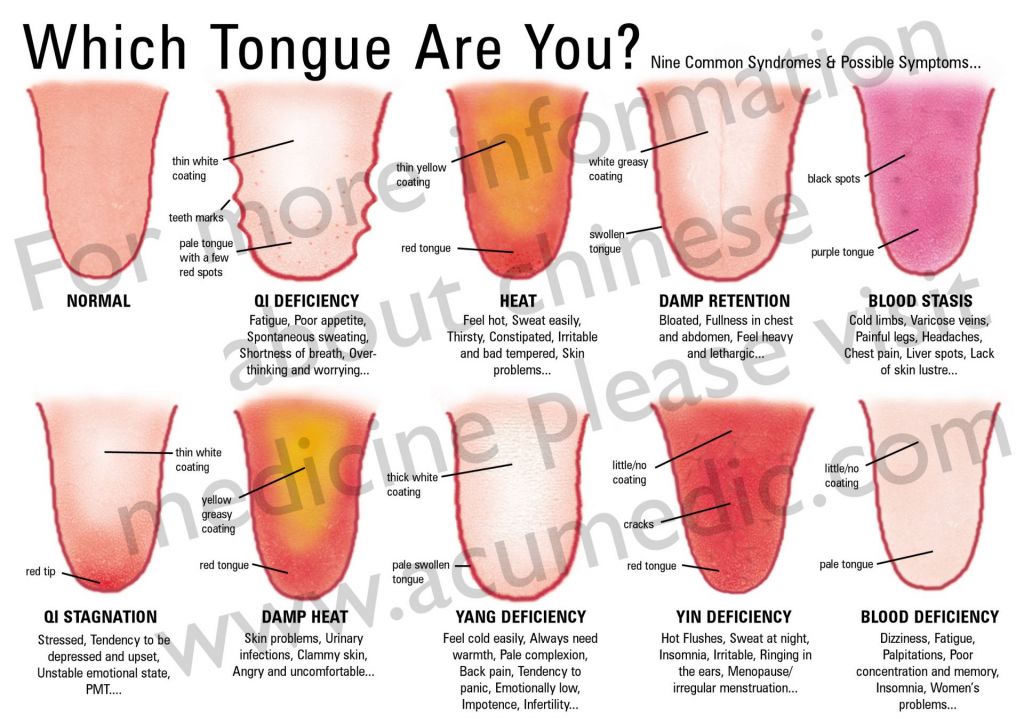Welcome to the world of tongue health! Have you ever wondered how your tongue can provide insights into your overall well-being? Well, get ready to dive into the fascinating realm of the tongue health chart!
When it comes to our health, our tongues can tell us so much more than we realize. This handy chart serves as a visual guide to understanding the connections between our tongues and various aspects of our bodies. It’s like having a secret language right in our mouths!
So, get ready to explore this comprehensive tongue health chart and discover how it can help you uncover clues about your body’s overall health. From color changes to texture variations, this chart will unveil a whole new level of insight into your well-being. Let’s embark on this journey together!
Tongue Health Chart – A Comprehensive Guide
When it comes to our overall well-being, we often overlook the importance of tongue health. However, our tongues can provide valuable insights into our overall health and indicate potential issues. Understanding a tongue health chart can help us identify and address potential problems early on. In this comprehensive guide, we will explore the various aspects of tongue health, from its appearance to common problems, and everything in between.
The Anatomy of the Tongue
Before delving into the specifics of tongue health, let’s start by understanding the anatomy of our tongues. The tongue is a muscular organ located in the oral cavity, responsible for various vital functions like tasting, swallowing, and speaking. It consists of different parts: the tip, the body, the dorsum, the root, and the frenulum. Each of these areas can tell us something about our overall well-being.
The Tongue Health Chart
The tongue health chart is a visual representation of the various signs and symptoms that can appear on the tongue, indicating different health conditions. It helps us recognize potential issues by observing changes in the appearance, texture, and color of our tongues. Let’s explore some of the key aspects of the tongue health chart in detail:
Tongue Color:
The color of the tongue is an important indicator of our overall health. A healthy tongue typically has a pinkish hue. If the tongue appears pale, it may indicate anemia or a deficiency in iron or vitamin B12. A white coating on the tongue can be a sign of oral thrush or a fungal infection, while a bright red tongue may signal vitamin deficiencies or a condition called glossitis.
Tongue Coating:
The coating on the tongue refers to a thin layer that can appear on the surface. It can range from thin and white to thick and yellowish. A healthy tongue may have a thin white coating, while a thick yellow coating might indicate poor oral hygiene or a digestive issue. It’s important to note any changes in the coating, as it can provide valuable information about our overall health.
Tongue Texture:
The texture of the tongue can vary from person to person and can change based on different factors. A healthy tongue should have a relatively smooth surface. If the tongue becomes rough, with visible cracks or grooves, it might indicate a condition called geographic tongue. Scalloped edges or indentations on the sides of the tongue can be a sign of teeth grinding or a sleep disorder.
Taste Buds and Papillae:
Our taste buds and papillae, the small bumps on our tongues, are responsible for our sense of taste. If we notice any significant changes in these aspects, it could be a sign of an underlying problem. For example, a swollen or enlarged taste bud might be the result of an injury or an infection. Fungal infections can cause the papillae to become enlarged or inflamed, affecting our ability to taste properly.
Other Tongue Abnormalities:
In addition to color, coating, texture, and taste buds, there are various other tongue abnormalities that can provide valuable insights into our health. These include ulcers, sores, bumps, and swelling. Any unusual changes or persistent issues should be evaluated by a healthcare professional to determine the underlying cause.
Tips for Maintaining a Healthy Tongue
Now that we have a good understanding of the tongue health chart and its significance, it’s essential to know how to maintain a healthy tongue. Here are some tips to help you keep your tongue in optimal condition:
Practice Good Oral Hygiene:
Brush your teeth and tongue at least twice a day and floss regularly. This helps remove bacteria and debris that can accumulate on your tongue’s surface, helping to prevent issues like bad breath and infections.
Stay Hydrated:
Drinking plenty of water helps keep your mouth moist, preventing dryness that can lead to tongue discomfort or inflammation. It also helps flush out toxins and bacteria that may accumulate on the tongue.
Eat a Balanced Diet:
A nutritious diet rich in fruits, vegetables, and whole grains provides the necessary vitamins and minerals for overall tongue health. Avoid excessive sugar and processed foods, as they can contribute to tongue issues and oral health problems.
Limit Tobacco and Alcohol Use:
Tobacco and excessive alcohol use can harm the tongue and increase the risk of oral health issues. Limiting or avoiding these substances can help maintain a healthy tongue and overall oral health.
Regular Dental Check-ups:
Visit your dentist regularly for check-ups and cleanings. They can identify any potential issues with your tongue health and provide appropriate guidance or treatment.
Conclusion
Our tongues play a crucial role in our overall health, and a tongue health chart can provide valuable insights into our well-being. By paying attention to the appearance, color, texture, and other aspects of our tongues, we can catch potential problems early and take appropriate action. Remember to practice good oral hygiene, maintain a balanced diet, and seek professional advice if you notice any unusual changes. Keep your tongue healthy, and you’ll be on your way to overall well-being.
Tongue Health Chart: Key Takeaways
- Keeping your tongue clean by brushing or scraping it can prevent bad breath.
- A healthy tongue should be pink in color and free from cracks, ulcers, or white patches.
- A white coating on the tongue may indicate poor oral hygiene or a yeast infection.
- If your tongue is sore or has a burning sensation, it could be a sign of vitamin deficiencies or oral thrush.
- Changes in the appearance or texture of your tongue may be a sign of underlying health issues.
Frequently Asked Questions
Tongue health is an important aspect of overall wellness. To help you understand more about maintaining a healthy tongue, we’ve put together some common questions and their answers.
Why is tongue health important?
Tongue health is vital because the tongue plays a crucial role in our daily lives. It assists with speech, chewing, and swallowing. Additionally, the tongue can serve as a mirror to our overall health. Changes in its appearance or texture can be an indicator of underlying health issues.
For example, a yellow coating on the tongue may indicate poor oral hygiene or a liver problem, while a white coating could signify an infection or oral thrush. By monitoring and ensuring good tongue health, we can take proactive steps in maintaining our overall well-being.
What is a tongue health chart?
A tongue health chart is a visual representation that helps identify the different regions of the tongue and their corresponding health indicators. It typically categorizes the tongue into sections and provides descriptions of what each section’s appearance may indicate.
These charts can be helpful for self-assessment and oral health maintenance. By referring to a tongue health chart, one can identify potential issues by recognizing abnormal changes in color, texture, coating, or the presence of any sores or ulcers on specific areas of the tongue.
How can I improve my tongue health?
To improve tongue health, it’s essential to practice good oral hygiene. This includes regular brushing of the tongue, preferably using a soft-bristled toothbrush or tongue scraper. Gentle brushing or scraping helps remove any debris, bacteria, or dead cells that may accumulate on the surface of the tongue.
In addition to cleaning, maintaining a balanced diet rich in fruits, vegetables, and plenty of water can contribute to good tongue health. Avoiding excessive tobacco and alcohol consumption can also improve the condition of your tongue. If you notice any persistent changes or concerns, it’s advisable to consult a healthcare professional for further evaluation.
Can tongue health be an indication of other health problems?
Yes, the appearance of your tongue can sometimes provide valuable insight into your overall health. For example, a bright red tongue may be a symptom of a vitamin deficiency, such as a lack of vitamin B12 or folic acid. A pale or bluish tongue could indicate poor blood circulation or a respiratory problem.
Unexplained sores or growths on the tongue could be a sign of oral cancer. It’s essential to pay attention to any persistent changes in the color, texture, or condition of your tongue and consult a healthcare professional if you have concerns.
When should I see a doctor about tongue health concerns?
If you are experiencing persistent tongue-related symptoms, it is advisable to seek medical advice. This includes any noticeable changes in color, texture, persistent pain, or the presence of ulcers or sores on the tongue that do not heal within two weeks.
Additionally, if you have difficulty speaking, swallowing, or moving your tongue, it’s crucial to consult a healthcare professional for evaluation, as these could be signs of underlying health issues that require attention.
Chinese Medicine👅Tongue Diagnosis #chinesemedicine
Summary
Taking care of your tongue is important for your overall oral health. Our tongue health chart showed that a healthy tongue is pink in color with a thin white coating.
However, if you notice any changes like a yellow or white coating, redness, or bumps, it may indicate an underlying issue. It’s essential to maintain good oral hygiene, including brushing your tongue and visiting your dentist regularly.
By paying attention to the condition of your tongue, you can catch any potential problems early and keep your mouth healthy and happy.


